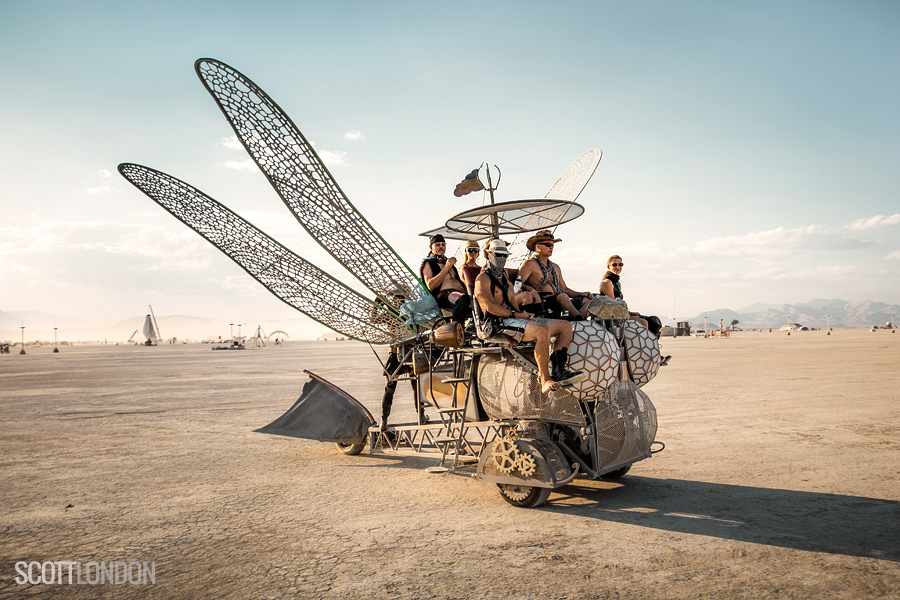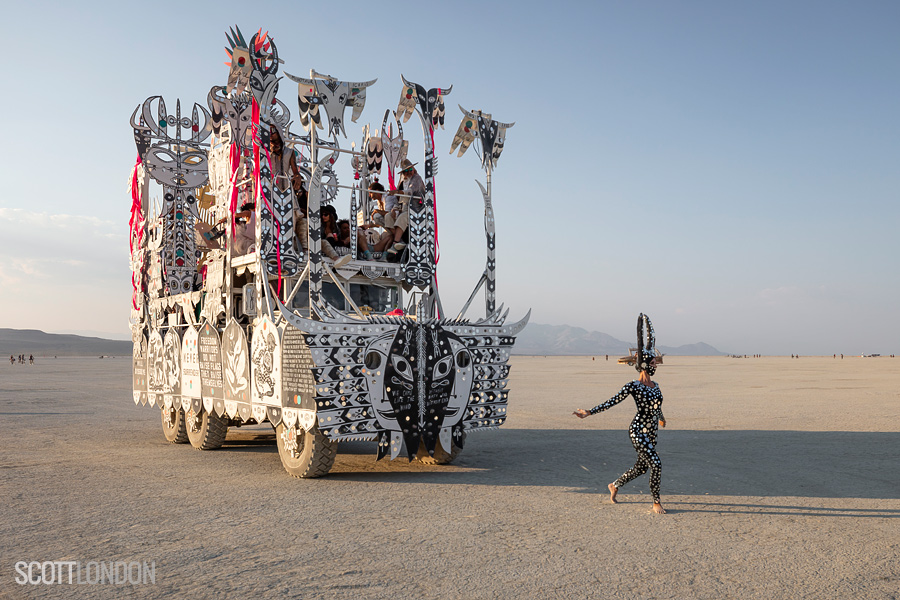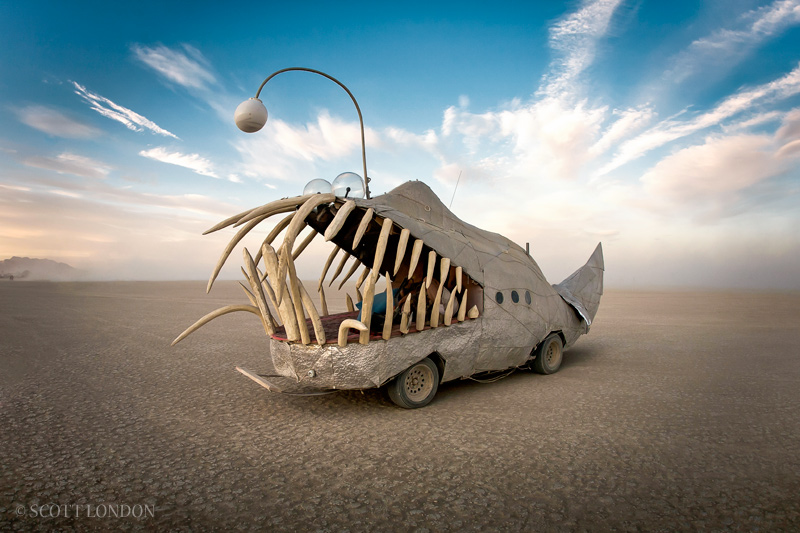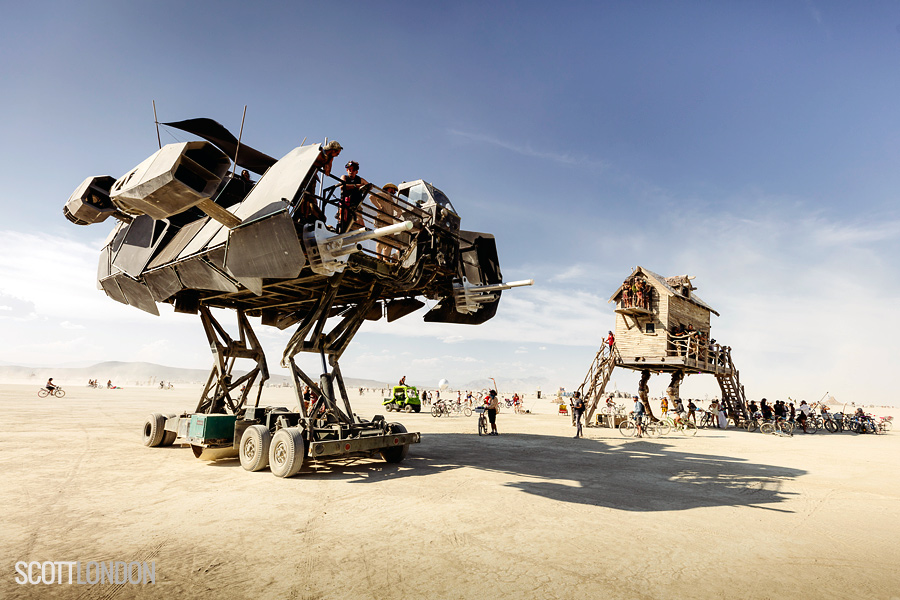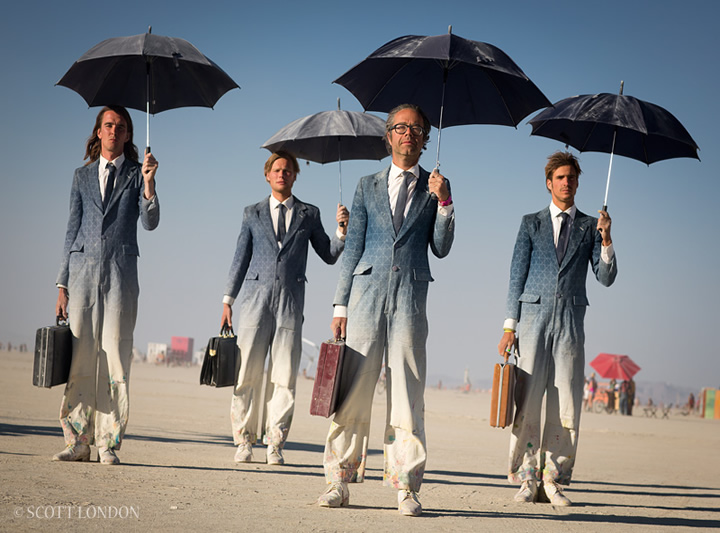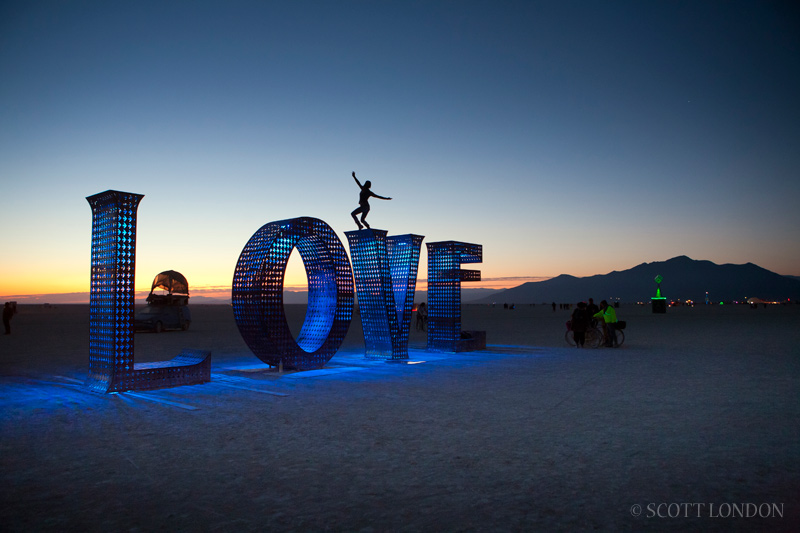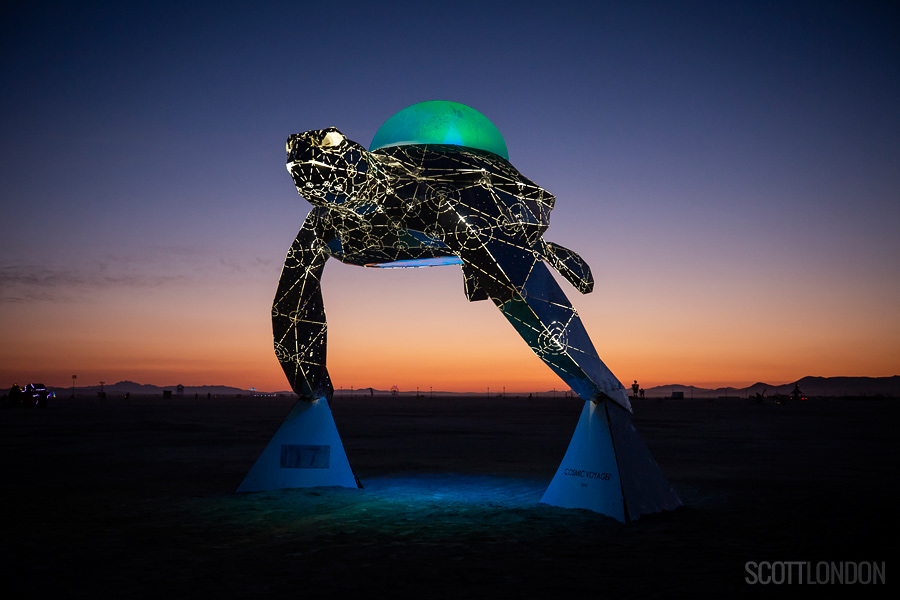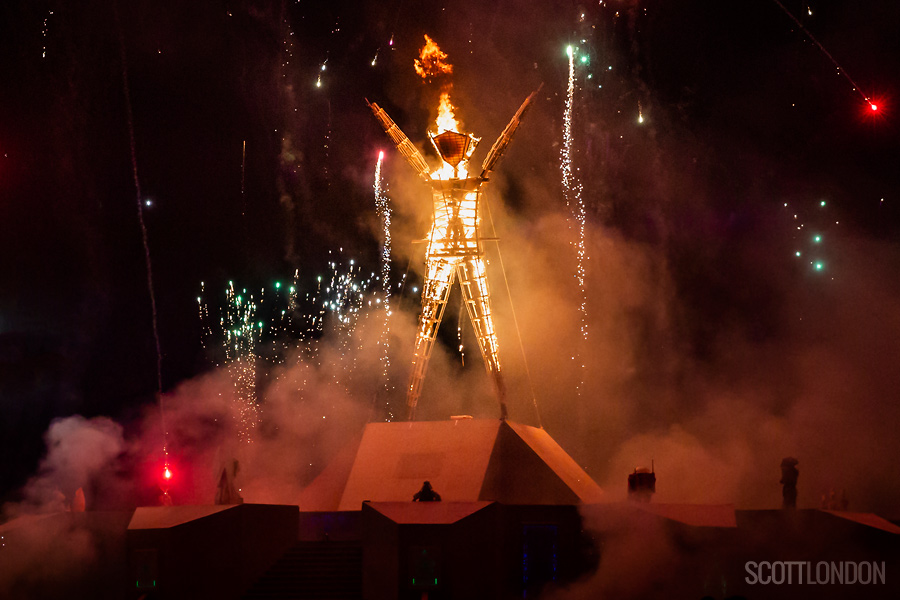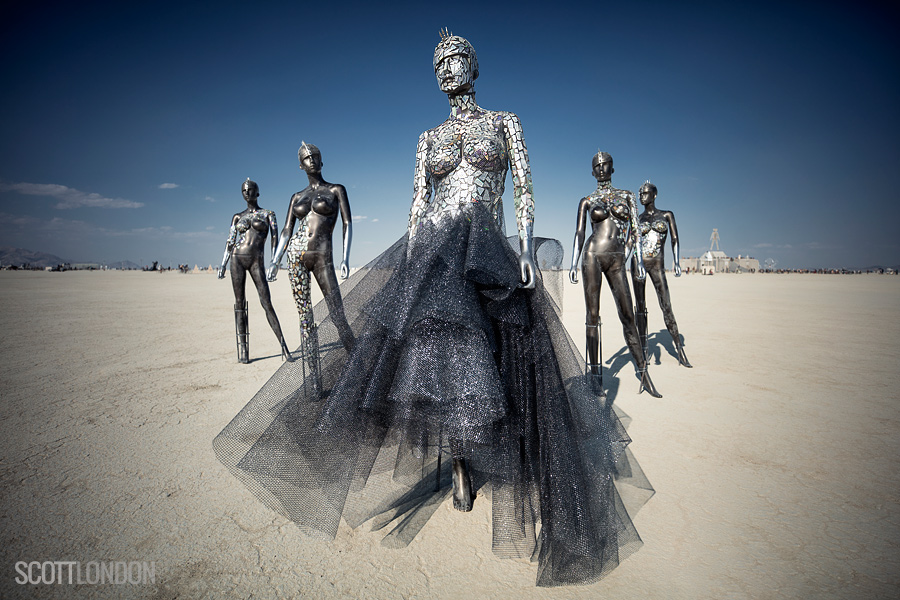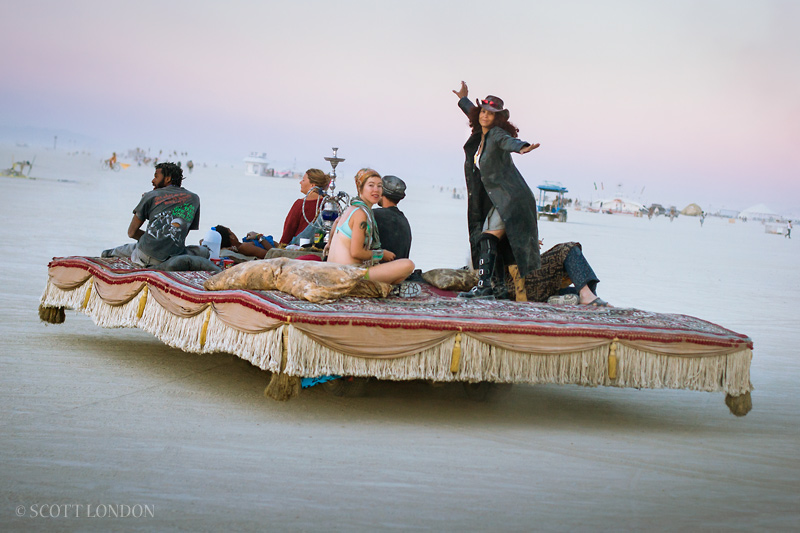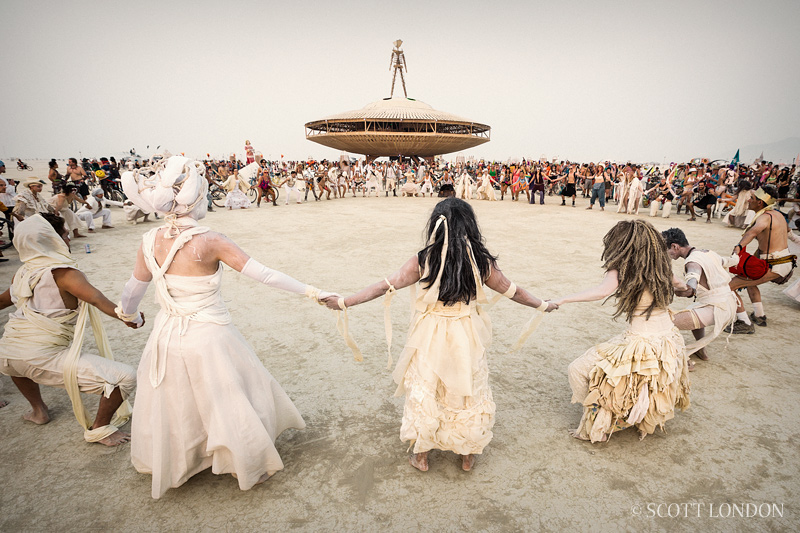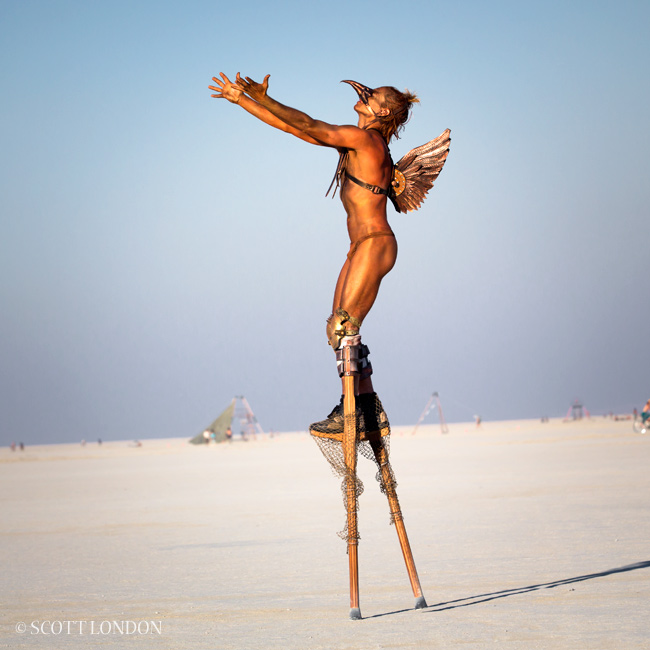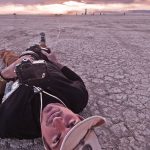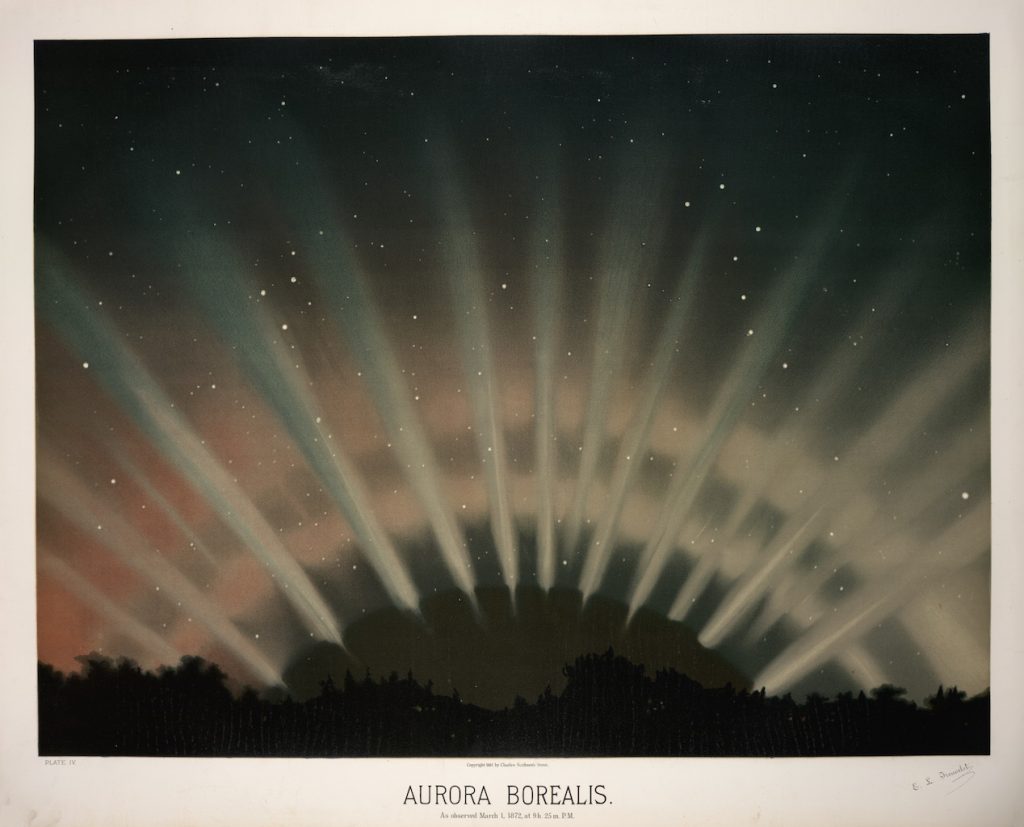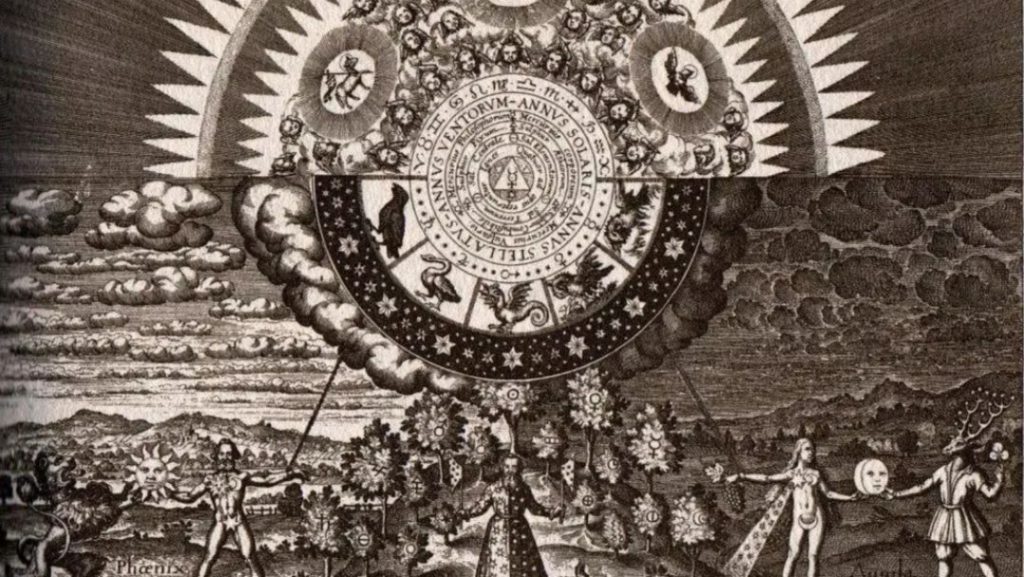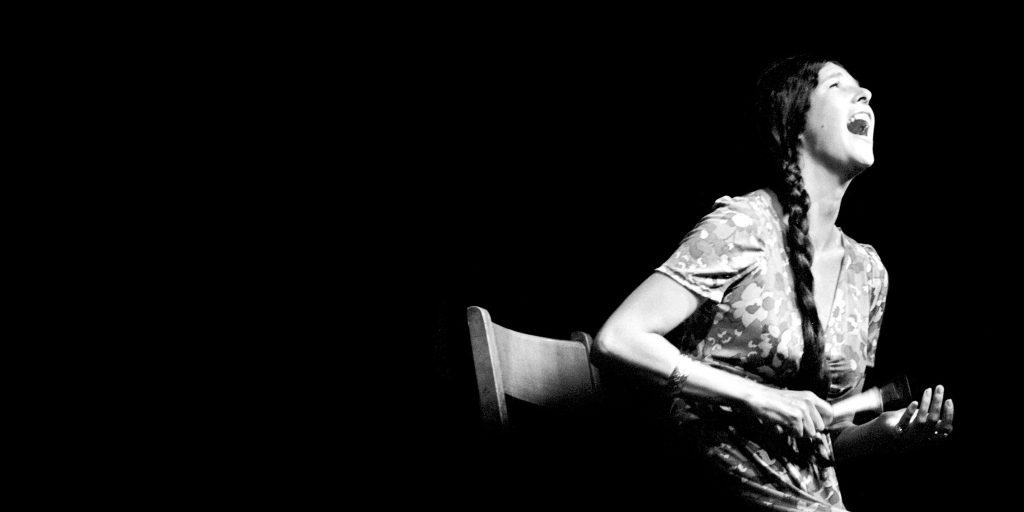Burning Man | What We’ve Learned
Sisyphus is a mythological figure, an ancient Greek king who was so clever that he was constantly fooling and tricking the gods. Long myth short, eventually he died, because clever only gets you so far, and was given a special punishment in Hades: he was eternally condemned to roll a giant boulder up a steep hill, and every time he was about to reach the top, the boulder would slip from his grasp and roll back to the bottom, and he’d have to start over again. All his labor was in vain, all his best efforts futile.
In 1942, French philosopher and novelist Albert Camus wrote an essay titled The Myth of Sisyphus in which he used Sisyphus as a metaphor to describe the absurdity of the human condition. We are searching for truth and beauty and clarity in a world that is empty and devoid not just of God but of any truth and value at all.
Camus concluded his essay by saying that even though we are all Sisyphus, we can be happy anyway. We can embrace the absurdity, and make our choices, and find satisfaction in the futile struggle to raise that boulder up the mountain, again and again.
The evidence from the experiment of Burning Man is conclusive: we can do better than this. Burning Man is a better offer. Even if Camus’s basic description of our existential condition is correct, we don’t want to live that way. Burning Man shows how we don’t have to. It is a prototype demonstrating how we can live very different lives than the myth of Sisyphus allows.
Paying attention is the very minimum qualification for doing this. The place where you have to get started individually. There is no replacement for it. There is no hack for it. It is where participation begins, and culture only belongs to those who participate in it.
GALLERY | Scott London Photography, Best of Burning Man
It doesn’t matter what you know; it matters whether you are learning. It doesn’t matter whether you are rich or poor, but whether you are giving. It doesn’t matter whether you are good, but whether you are being good. Doing good.
This activity is not to achieve a specific outcome; it is to keep practicing skills that are unconditional—things we value and do for their own sake—rather than transactional. Learning unconditional skills is fundamentally different from learning transactional ones. As we all have discovered in this life, you can’t make someone care. You can’t force someone to love. You can’t compel someone to be curious or conscientious. You can only make them go through the motions of these things, which is far less effective and just as likely to cause resentment and resistance. You can force someone to learn how to do arithmetic, but you can’t make them be interested in math.
The only way you can actually encourage someone to practice unconditional skills, rather than practicing the appearance of having such skills in front of an authority figure, is to give them the opportunity to practice authentically, which means putting them in an environment in which this is possible. This means putting them in an environment in which one can discover and experiment with one’s own unique intrinsic motivation. As they discover and explore what matters to them, as they practice doing what they care about and achieving mastery with it, they internalize the unconditional skills that make it possible for them to truly participate in a culture. They seek out expertise, they find communities of shared passion, they pool resources to create more interesting projects, they contribute and give. People whose primary motivations and skills come from extrinsically motivated tasks have no reason to stop the world from sinking if they’re able to profit from the waves. People whose primary motivations and skills come from intrinsically motivated goals have practiced sacrificing the needs of the moment for something greater than themselves.
Burning Man is not a noun, it’s a verb, because really all culture is a set of verbs. So we do not get to stop. We keep going, improving, making things better, recognizing that there will be imperfections and trade-offs and still working, with no end point in either sight or mind, to practice being the people and communities we want to be. No matter how good you get, you will always be an amateur, trying to learn new ways to do it better.
Burning Man is a proof of concept demonstrating that a culture that tries to keep people in their place is far less effective and unifying than a culture that tries to put people in a position where they can find their own meaningful goals and make choices that are meaningful to them. This is what we have demonstrated. Burning Man is supported by an army of volunteers, tens of thousands that we know of, around the world, representing every income level and station of life, liberal and conservative and apolitical. It has donors ranging from the superwealthy to people struggling to get by. Burning Man has thrived because this dynamic works. People who discover what is important to them when they work with you, who can make meaningful choices as a result of your presence in their life, and who feel that there is still room for them with you as they grow and change as a result of these choices, will stand by you through hell.
You often get more from people, much more, when you engage in unconditional relationships with them than you ever do from transactional ones. We overlook that in our default world because we do not practice the skills that lead to unconditional relationships. We are bad at them.
Happiness, let us remember, is found in working at your capacity toward a goal you find meaningful. Burning Man culture spreads because we have more fun, because that fun is good for people in ways that are meaningful to them, and because anyone can play. These things are all that it takes to develop the skills in people that are, as they are mastered, the essence of a thriving culture.
But let’s not discount the competence of artists to do this work. Art, like laughter, like love, is the epitome of something we do for its own sake and thus has unconditional value. Art is also the epitome of creative tension. Often it is possible to use art to practice vital cultural skills that are not yet imagined, let alone understood, anywhere else. Of course Burning Man started out as an art experiment; what starts out as art becomes culture.
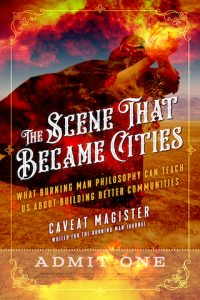 We don’t need a blueprint, we don’t want a master plan, we just need to practice the skills and create the kind of spaces we want to live in, and share them. And if you don’t know what those skills and spaces are yet, make art and give it away to find out. That’s how Burning Man started. Then find someone doing something interesting that you do not understand at all, and ask: “How can I help?” That’s how it grew. Out of these simple acts, individuals and cultures can place themselves in creative tension and grow together.
We don’t need a blueprint, we don’t want a master plan, we just need to practice the skills and create the kind of spaces we want to live in, and share them. And if you don’t know what those skills and spaces are yet, make art and give it away to find out. That’s how Burning Man started. Then find someone doing something interesting that you do not understand at all, and ask: “How can I help?” That’s how it grew. Out of these simple acts, individuals and cultures can place themselves in creative tension and grow together.
Above all, do not be Sisyphus. Don’t let the role you are assigned isolate you from others.
Don’t accept the need to manufacture plastic happiness out of meaningless, passionless pursuits. Don’t turn yourself into a commodity. Practice reaching out to the world around you. Develop skills that create conditions out of which things you and others genuinely care about, deeply and passionately, can emerge. Over and over again.
PHOTOGRAPHY | courtesy, Scott London (www.scottlondon.com)
EXCERPTS | from The Scene That Became Cities, by Caveat Magister
published by North Atlantic Books, copyright ©2019. Reprinted by permission of publisher.


